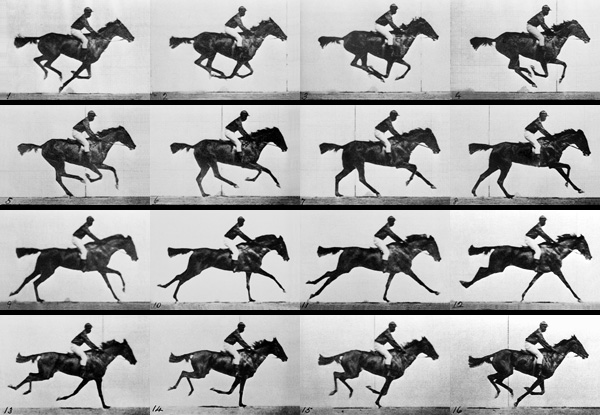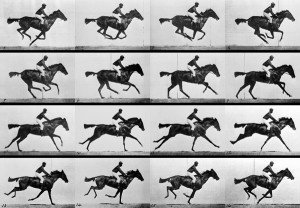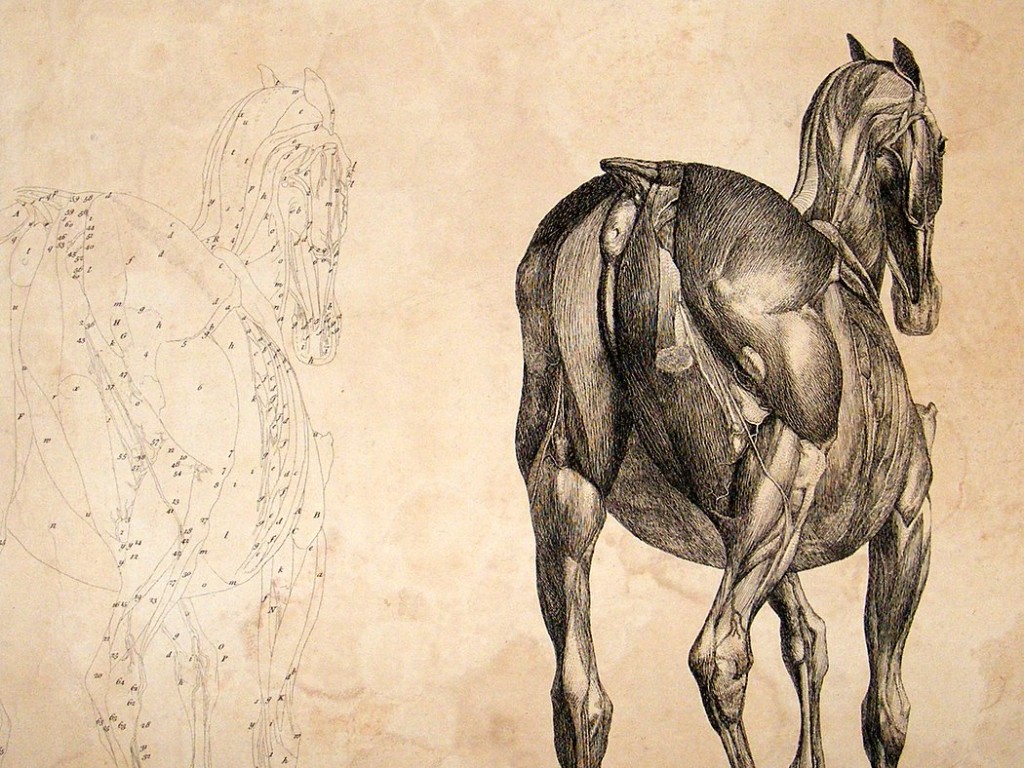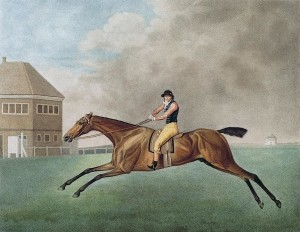On Edward Muybridge and Big Data
Why Edward Muybridge may be the patron saint of big data.
Edward Muybridge (1830 – 1903) used the nascent technology of photography to change our understanding of the human and animal figure. His sequential photographs solved the problem of understanding motion despite the limitations of the human retina’s rods and cones to process dynamic visual data.
His photographs of horses were a revelation. For the first time it was possible to see how a horse actually galloped, which feet were where and when. The fact that all four hooves were high off the floor and tucked under the belly of the horse at full speed was counter-intuitive and mesmerising for an audience that had never been able to see it before.
People had been curious for centuries about how horses moved but had never been able to provide conclusive proof. George Stubbs a hundred years previously had made understanding the horse, its anatomy, posture and motion a lifelong pursuit. He slavishly observed the animals, drew and painted them from every conceivable angle and in a nod to Leonardo da Vinci had horse cadavers strung up in his studio. He would draw the dead animals and then flay them over time recording the unfolding anatomy with a pen and ink or as above, with an etcher’s needle on copper plate. Nobody on earth knew more about the horse and as an accomplished painter, no one was better placed to create the finest equestrian paintings.
When it came to horses on the gallop however, Stubbs was left guessing and inventing what he saw. The limitations of the human eye to give him the data he needed to make convincing representations of horses in motion produced what was perfectly acceptable at the time but we see now as naive and kind of comical.
When Muybridge used the camera to photograph the horse, he was augmenting the human eye. Marshall Mcluhan called these augmentation technologies ‘the extensions of man’. These technologies are not abstractions (like the computer mouse) but enable people to do things previously not humanly possible . They create a sort of ‘super-human’ in all of us. Just like when Galileo’s telescope enabled 17th century Venetians to clearly see further to the moon or nearer to the head of a flea.
Now we are waiting for a 21st century Muybridge to provide an extension to our data analysis capabilities. Our brains are good at pattern recognition (from our hunting instinct) and poor at creative analysis over massive, fluid data sets. Our current analysis methods around big data sets are to unpick and analyse, much like Stubbs and the horse cadaver. What is really missing is the ability to understand the underlying truth. We literally take snap shots of the data and expect it to reveal the unfolding story through extrapolation. In time the results of extrapolative algorithms we are currently relying on, will be seen to be as naive as Stubbs’ portrayal of the galloping Baronet.
In trying to improve our pattern matching skills we may be trying to augment the wrong human attribute. What may be required is augmented creative thinking – a way to extend human creativity as the key factor in the design of the technology that will improve and illuminate our capability to understand. Technology requires creative use to be really effective.
Artists wanted.
Photo credits:
Galloping horses – Edward Mybridge, Public Domain
Baronet by Stubbs – Yale Center for British Art, Paul Mellon Collection, Wallington, Connecticut, USA
Horse anatomy by Stubbs – Albion prints





